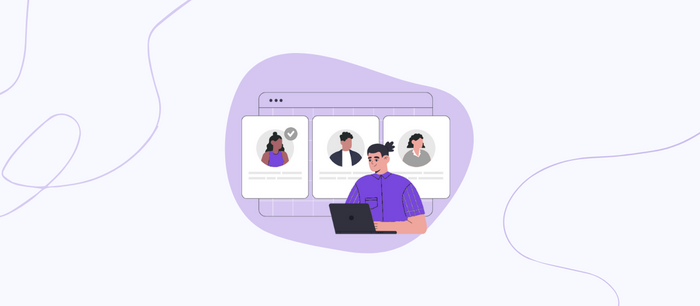What are Pledge Donations, and Why Should You Host a Pledge Fundraiser?

As a nonprofit professional, you’re probably always looking for fresh, engaging fundraising ideas. Pledge donations are key to every nonprofit’s success since bringing in more revenue means you’ll be able to make a bigger impact.
Revenue isn’t the only reason to fundraise, though! Effective nonprofit fundraising also allows you to spread awareness about important causes, expand your supporter network, and engage your community in your mission. Fundraisers that collect pledge donations fill all of these needs.
During pledge fundraisers, supporters reach out to their network of family and friends, who then donate (often for the first time) to support their loved one’s participation in an event. Pledge fundraising is very versatile, so you can adapt the basic concept to fit your individual nonprofit’s needs.
In this guide, we’ll walk through everything you need to know about pledge fundraising, including:
With the right tools, planning, and creativity, pledge fundraising can bring your community together and set your nonprofit up for success. Let’s dive in!
What Are Pledge Donations?
With pledge donations, donors commit to giving a certain amount up front, and your organization receives their contribution later on. Event participants can use peer-to-peer fundraising pages to gather support based on their participation in a nonprofit event.
Once your nonprofit sets up a pledge campaign, event participants will share their individual pages with their friends and family. When a friend or family member donates through the participant’s page, they have the option either to make a flat donation or a pledge donation corresponding to the level of participation the attendee achieves. In other words, they’ll give a designated amount of money for each activity the participant completes.
Types of Pledge Fundraisers
Most pledge fundraisers have two components: the peer-to-peer campaign and the event. These are usually a-thon style events, such as:
- Walk-a-thons
- Fun runs or jog-a-thons
- Bowl-a-thons
- Dance-a-thons
- Swim-a-thons
- Bike-a-thons
- Read-a-thons
The thing all 'a-thon' events have in common is that attendees will participate in one activity for a long period of time. The way you structure pledge donations will depend on the nature of the activity. For example, if you host a swim-a-thon, supporters could pledge a dollar amount for each lap the participant swims. For a bowl-a-thon, pledges might be based on participants’ scores.
When you choose a type of pledge fundraiser, you’ll want to consider your audience and choose an activity your supporters enjoy. You might want to send out a survey with a few a-thon event options and choose the one that gets the most votes.
The cause you’re fundraising for might also influence your activity choice. For instance, a read-a-thon would work well for an educational nonprofit, while a health-focused organization might choose a walk- or bike-a-thon to encourage supporters to exercise. A-thon events can work with just about any activity you can do for a long time, so don’t be afraid to get creative!
Steps to Host a Pledge Fundraiser and Gather Pledge Donations
Your nonprofit can get started with pledge fundraising in six easy steps:
1. Plan and promote the event
Once you’ve decided what type of a-thon event you’re hosting, you’ll need to plan out logistical details, including:
- Whether it’ll take place in-person, virtually, or in a hybrid format
- The date, time, and location
- An event theme if you want one
- Staff and volunteer duties
- The pledge donation collection software you’ll use
Next, you’ll need to start promoting the event. Because these events rely on participants and their social networks to generate funding, spreading awareness is essential. To reach the most participants, use several marketing channels, such as:
- Your organization’s website
- Social media
- Flyers
- Direct mail
For any marketing channel you choose, the key is to communicate about the event early and often. This way, many of your supporters will see at least one of your messages (and hopefully more!).
2. Register event participants
On each marketing channel, direct participants to your event sign-up form and a resource page to ensure they have all the information they need to decide if they want to participate. Keep the sign-up form simple so participants can fill it out quickly and easily, but make the resource page more detailed so they know exactly what you’re asking them to do.
During registration, you might offer event merchandise like a t-shirt or water bottle with your nonprofit’s logo. This brings in extra donations and spreads awareness by giving your organization “free” advertising when supporters wear or use your merchandise. Branded merchandise can also give participants a fun way to remember the event.
3. Have participants collect pledge donations
Once participants register, send them information about how to access their personalized peer-to-peer fundraising page through your pledge software—the easier, the better! Then, they can share the link to their unique page with their friends and family through social media, email, and text. When someone wants to donate, they can make their pledge donation on that page in minutes.
4. Host the event
The day of your a-thon event is when all your preparation will pay off! Leading up to your event, you’ll want to go through your preparation checklist:
- Is the event space (in-person, online, or both) set up?
- Do you have all the supplies you need for the activity, plus any extra items for participants (like the merchandise they ordered, water, and snacks)?
- How many volunteers do you have, and what will each of them be doing?
Besides completing their event duties, your volunteers and staff will also have an important role to play in making the event enjoyable. Depending on the activity, you could also ask participants to invite some of the friends and family who pledged donations to cheer them on!
5. Track your results
One way to keep participants’ energy up and encourage some friendly competition is to announce event results as they come in. You could use a fundraising thermometer to show how much money you’ve raised overall, display a leaderboard of top fundraisers, and hand out awards at the end of the event.
No matter what you choose to do during the event, you’ll want to review your results carefully after the fundraiser concludes. This way, you can figure out what went well and what you could improve on for future events. A-thon style events make great annual fundraisers, and if you track your results from past years, you’ll be able to make the next year’s event even better!
6. Thank your donors, event participants, and volunteers
As with any fundraiser, thanking supporters is essential in pledge fundraising. First, send a thank-you message to each of your event participants. Then, send another message to the people who donated to the peer-to-peer campaign, and thank your event volunteers in a third message. Let them know what the funds will go on to accomplish, emphasize that they made it possible, and suggest other ways for them to get involved at your nonprofit.
Sending three separate messages like this helps you personalize your thank-yous. You’ll also want to put each supporter’s name and the amount they contributed to their message to recognize them individually. Personalized messages make supporters feel valued, which motivates them to continue donating, volunteering, and attending events at your organization in the future.
Benefits of Pledge Fundraisers and Pledge Donations
Pledge fundraisers have a lot of value for nonprofits. Here are a few reasons why:
- They bring the community together. On the day of your event, the participants, their friends and family, volunteers, and your nonprofit’s staff will all come together under a common cause. And as 99Pledges’ guide to fundraising ideas for kids points out, pledge campaigns work for all ages so the whole family can fundraise and participate together.
- They grow your organization’s network. Your event volunteers and some participants will probably already be involved with your nonprofit. But other participants might join just because they enjoy the activity and want to support a good cause even though it’s their first time getting involved with your organization. When participants share their fundraising pages, they also make new connections for your nonprofit, which you can cultivate into long-lasting supporter relationships.
- They’re adaptable to many nonprofits and events. While there are many traditional a-thon style events your organization could choose to host, you could connect pledge fundraising to your cause in many creative ways. For example, an environmental nonprofit could have supporters collect pledges based on how much litter they collect at a local park during a scheduled clean-up day.
- They expand events’ fundraising potential. Without a pledge campaign, the revenue you bring in from events is limited to the supporters who actually attend the event. Adding a pledge element allows donors to give even if they aren’t able to attend, allowing you to get more people involved and raise more funds.
Most of all, pledge fundraising is fun! That’s why they work so well as annual or recurring fundraisers—once supporters participate once, they often want to get involved again.
For your nonprofit’s next fundraiser, try combining a peer-to-peer campaign with a fundraising event to hold a pledge fundraiser. With the right tools and a bit of creativity, your organization can bring the community together to have fun and raise even more money than you could with an event alone. Good luck!
.svg)



